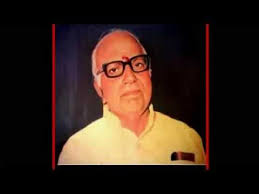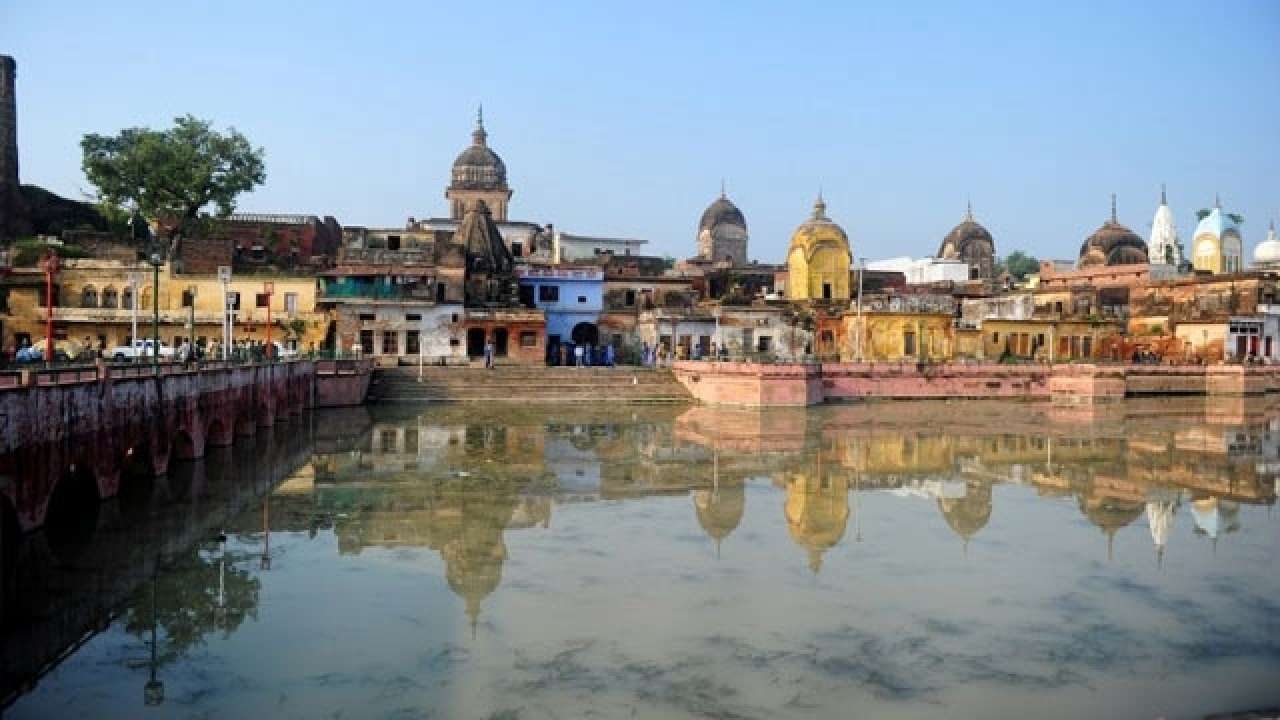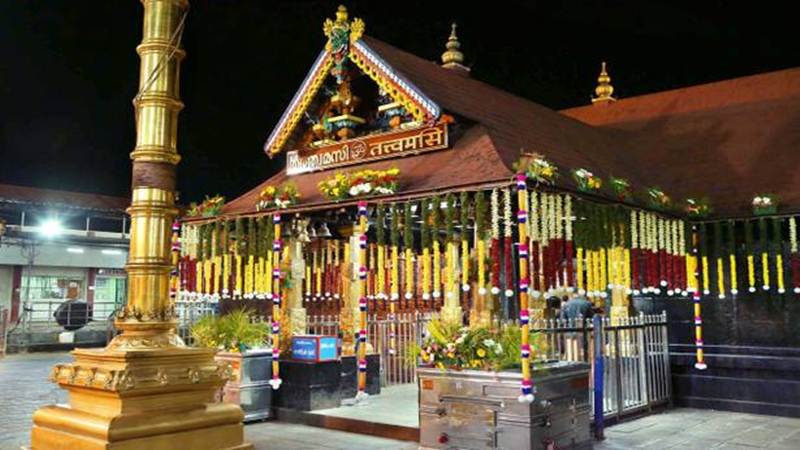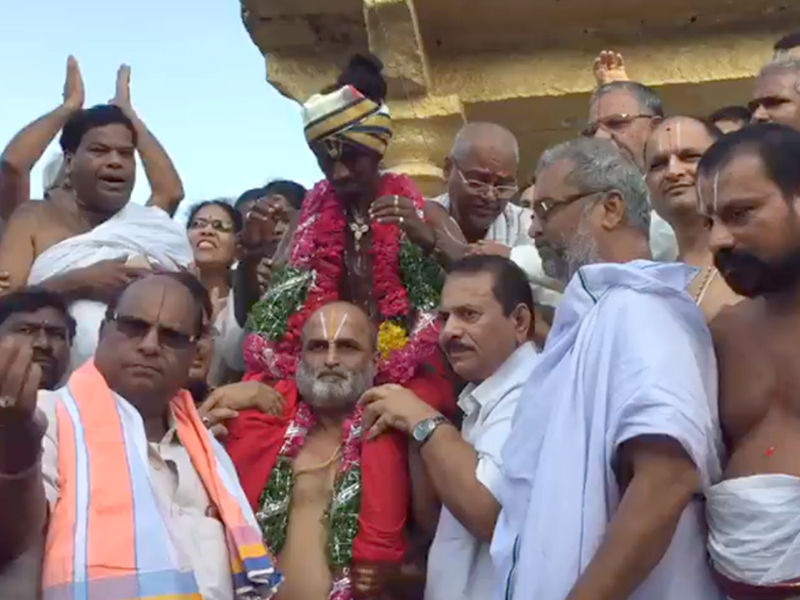“Le législateur deviant le transgression” “The legislator becomes the transgression.”
‘fence itself eating the crops’?
pukki kaalimaan vartijana, a goat guarding the cabbage patch.
a fox guarding a hen house
For the last 270 years, Christian Missionaries have been luring poor, downtrodden Hindu folks with gifts, food, etc and finally convert them. When will Indian Government free Hindu Temple treasures so that only Wealthy Hindus (and not Wealthy Christians) may feed and clothe our downtrodden. Why is our Hindu Temple money used for Haj and Jerusalem? Why is people’s money parked at Swiss Banks in some minister’s name? Who is responsible for this corruption? Why is Hindu Hundi money used for Government schemes? Why are pots of Gold and precious jewels stolen from the ancient Temples by government authorities? Why does the Indian government believe the British idea that Hindus are unable to manage Hundi Money? Congress party must answer these questions.
What has ‘Congress party’ done for India for the last 68 years?
What has Congress party for last 70 years done to alleviate poverty in India? They have not done anything in that matter. Yes, Nehru was responsible for establishing elite institutes like IITs which did produce great engineers and scientists who eventually migrated out of India due to bad governance, partisan politics, and corruption. Nehru, not giving much importance to the basic education for the masses left the country in the darkness of illiteracy resulting in poverty. Dishonest Congress party constantly played vote bank politics and divided the communities. In short, they quickly realized that by keeping the poverty alive and at the same time only giving the false promises of development, they can be elected forever.
During the British rule, only the Hindu temples with the exemption of churches and mosques were controlled by the Government. Congress party continued this tradition of control of only the Hindu temples. Huge amounts of religious donations given by devout Hindus were used or plundered with no records. Nobody knows what happened to the ‘Hundi’ Money given by Hindu diaspora. This has raged the middle-class Hindus that their money is being lay wasted and not being used for good causes such as to educate and feed the poor like the churches around the world do.
Seeing the oneness of Advaita, not accumulating, giving, and sharing is the core of Hindu philosophy. Till not so ancient times Hindu temples played a big roll in education and community welfare. So Hindus, in spite of generous donations to the temples get criticized for not being philanthropic like Christian missionaries. That upsets them very much. The opportunist Christian missionaries are certainly taking advantage of this grave political situation in India to promote Christianity.
——————————————————————————————
Hindu Sanyasi(Monk) kitty versus wealth of foreign Christian Missionaries
The simple Sanyasis of various Ashrams of India were always busy using whatever money was donated to help uneducated downtrodden, vulnerable poor folks. Their kitty was nothing in front of the huge Christian charity coming from the west or the wealth of the 10 richest temples of India hijacked by the Congress party.
Ramakrishna Mission provides treatment to more than 84 lakh people every year. During floods in Chennai every day they distributed food packets in lakhs. Satya Sai foundation provided drinking water to 700 drought-affected villages. For this, they lay down 2500 km long pipeline underground and constructed more than 200 water tanks with their own funds. When tsunami had struck India, Mata Amritanandamayiee Math had constructed 25 thousand homes for displaced people. Time and time again we have seen tireless volunteers of RSS helping not just Hindu Indians but all Indians. Indians have no words to express gratitude to all such organizations.
Hindu Ashrams or Mathas
and many more…
——————————-
Most Popular Indian NGO
Click on Sewa, Our AFFILIATES, Prant Pratinidhi Samsthas, Check your Prant, the address of Samstha, Donate
Click on Our AFFILIATES, Prant Pratinidhi Samsthas, Check your Prant, the address of Samstha, Donate
Your Prant, address of Samstha, Donate
————————
Hindu spiritual and service fair
What is the Hindu Spiritual and Service Fair?

Rig-Veda says “Charity gives a deep sense of self-satisfaction”. Then Rig-Veda states, “One should strongly resent miserliness and indulge in charity because one can acquire the never-ending wealth of immortality by doing so.” Charity is something that is stressed and preached across religions and regions for humanity. Ritual of regularly donating a certain fixed amount of one’s income for charity has been an age-old tradition in India. Hence perception that HINDU RELIGIOUS BODIES do not do charity and don’t help the underprivileged is wrong. Wrong news and perception, that Hindu society does nothing to help underprivileged and weak, is created. That is why, S. Gurumurty, Economic advisor to Prime minister Shri Narendra Modi, initiated HSSF Foundation and held it’s first ever and very successful Fair in 2009 in Chennai.
With many stalls given to different religious institutions, it puts forward charity work done by them for public evaluation. All India institutions like Art Of Living, Ramakrishna Mission, ISKON, Jivan Vidya Mission are present here. Revered saints of Hindu Jain, Sikh, and Buddhist guide here.
The Second idea behind this is conserving our environment, third is saving the ecology, fourth is strengthening the value of humanity and family, a fifth is respect to women and sixth is feeling of national pride. All such Hindu organizations are invited to showcase their work done through various stalls in this fair. Simultaneously various CSR, Corporates, and Donors are also invited to see the Charitable work done by this organization, whereby they can donate to the purpose which impresses them more. The role of the Temple since ancient days is to provide a bridge between the people with poverty and people with extreme wealth. Unfortunately during the last 800 years of Muslim and British Rules, this purpose of Temple was distorted, but still, most of the temples with whatever money they have are performing the duty of helping the society where the need is.
The HINDU SPIRITUAL AND SEVA FAIR is the effort to show various kind of charitable works by Hindu Temples and Organization which is remarkable and commendable, but still, a lot has to be done. The society and such organization will get a better feeling about the work done and through this fair, we will be encouraged to do far more work in the coming time. This fair and pre-fair are great leaps forward in connecting Hindu spirituality to contemporary challenges. Hindu spiritual texts refer to the need for everyone to extend charity to deserving persons and causes regularly.
Few examples are that Ramakrishna Mission provides treatment to more than 84 lakh people every year. During floods in Chennai every day they distributed food packets in lakhs. Satya Sai foundation provided drinking water to 700 drought-affected villages. For this, they lay down 2500 km long pipeline underground and constructed more than 200 water tanks with their own funds. When tsunami had struck India, Mata Amritanandamayiee Math had constructed 25 thousand homes for displaced people. Time and time again we have seen tireless volunteers of RSS helping not just Hindu Indians but all Indians. Indians have no words to express gratitude to all such organizations. The Whole idea behind this entire activity is to bring to fore the continuous social and charity work done by Hindu Matth and religious institutions so that they are inspired to do more and better.



Hindu Spiritual and Service Fair
Hindu Temple Charity controlled by Indian Government
The most corrupt Congress Party had closed its eyes purposely and wanted to keep India’s poor in the even worst state. Keeping Indians in poverty and ignorance was their agenda so that they may win time and time again by fooling these vulnerable and uneducated folks with empty promises.
Indian Government acquired control over Hindu Temples in 1959. As per this law, all the revenues generated by the temple (including Hundi funds) went to the Govt (not the temple priests/heads) and it was the prerogative of the Govt to decide how much of this revenue would be returned to the temples for their maintenance.
Now comes the most unfortunate part. Over the last few decades, secularism has gradually turned into pseudo-secularism which is basically appeasement politics. There have been instances where a state govt had collected all the revenues from temples, but returned only a part of it to them for their maintenance & salaries, and diverted rest of the revenues (from Hindu temples) towards subsidizing Haj, funding Madrassas & Missionaries!!
Consider the year 2002. Karnataka State Govt received around Rs 72 crore from 251,000 temples. But only Rs 10 crore was returned to the temples while rest of the funds were used for other purposes including funding of Rs 50 crore for madrassas & Haj subsidy and Rs 10 crore for Churches.
Also, notice that the number of temples has reduced because thousands of temples had to be shut down due to “lack of funds”!! It makes no sense because there was sufficient revenue (Rs 72 crore) generated from temples but they were not used towards temples and were instead used on activities of other religions, thereby allowing the temples to deteriorate and shut them down citing lack of funds.
—
———————–
Hindu Temples Looted
Demanding Swarajya for Hindu Temples
कोल्हापूर – साडेतीन शक्तीपिठांपैकी एक असलेल्या कोल्हापूर येथील श्री महा…
—
Stop donating money to Govt controlled TEMPLE HUNDI, instead pay dakshina directly to priests!
—
Articles
——————————————————————————————
The Wealth of India’s Hindu Temples
—————————————————————————————–
Did the government do any charity in the name of temples?
If so, how much was it compared to the total earnings?
How did they use the rest of the money and for what purposes?
Sri SiddhiVinayak Temple Mumbai
Sri Mahalakshmi Temple Mumbai
———————–
Sri Shirdi Sai Baba Temple Shirdi
2006 :: Welcome to Shirdi Sai Trust – Shirdi Sai Trust News Shirdi,Saibaba,Sairam,Shirdisaitrust,Dwarakamayee,Gurusthan,mandir,Sai,Baba,trust,video,picture,aarati,Arathi,puja,Ashtotram,Sahasranam,charitable,education,medical
siddhivinayak.org/Shirdi%20Temple.pps
————————
Sri Meenakshi Amman Temple Madurai
to be continued……
———————
Sri Padmanabha Swami Temple
to be continued……
————————-
Sri Guruvayur appan Temple
to be continued……
———————
Sri Tirupati Venkateshwara Balaji Temple
to be continued……
Sri Kashi Vishweshwara Temple
to be continued……
——————————
Sri Vaishno Devi Temple
to be continued……
———————–
Sri Jagannatha Puri Temple
to be continued……
————————
Sri Somnath Temple
to be continued……
————————-
Satya Sai Baba
—————————–
——————————————————————————————
——————————————————————————————
Do Indians Give Enough Away?
——————————————————————————————
Charity and Law
——————————————————————————————
Message of equality
Castism and discrimination are societal problems and not a religious problem. No scripture or a Guru ever preached it.
S

——————————————————————————————
German tax ~10 billion Euros pay for Church. Other countries too. Indian state robs even direct Hindu temple daan
——————————————————————————————
Church tax – Wikipedia, the free encyclopedia
Church tax
From Wikipedia, the free encyclopedia
Austria[edit]
Every recognized religious group in Austria can collect church tax at a rate of 1.1%, though currently, only the Catholic Church makes use of that opportunity. Church tax is compulsory for Catholics in Austria. This tax was introduced by Adolf Hitler in 1939. After World War II, the tax was retained in order to keep the Church independent of political powers.[1]
Croatia[edit]
The Roman Catholic Church in Croatia receives significant state financial support and other benefits established in concordats between the Government and the Vatican. By the special agreement between Holy See and the Republic of Croatia, Croatia is, through the state budget, financing salaries and pensions of the clergy (even the military chaplains), church sacral objects maintenance and restoration, building and running of church schools and universities.
Percentage-wise, about 0.46% of state budget ends up funding activities of the Roman Catholic Church in Croatia.[citation needed].
Denmark[edit]
The members of the national Church of Denmark pay a church tax, which varies between municipalities but can be as large as 1.51%. The tax is generally in the vicinity of 1% of the taxable income. The tax doesn’t cover the entire budget of the church. An additional 13% is paid by the government. This means even people who are not members of the church finance the church through taxes.[2]
Finland[edit]
Formerly, to stop paying church tax, one had to formally leave the church by personally going to the local register office and waiting for an allowance of time for reflection. This requirement was removed in 2003 and currently, a written (but not signed) statement to the church suffices. The majority of resignations since 2005 are now handled through a website, Eroakirkosta.fi. If one is a member of the church when the year begins, he/she will pay taxes for the whole year; however, these are later returned as a tax refund. Studies show that church membership resignations in Finland are mainly due to the general secularization of society, not because of tax avoidance.[3]
In addition to personal taxation, the state divides some of the money collected by taxing private companies into the two state churches. It does not matter if the company is owned by church members or non-members. It has been argued that the churches use this money to upkeep cemeteries, to which they are obligated by law.
Germany[edit]
About 70% of church revenues come from church tax. This is about €9.2 billion (in 2010).
In Germany, on the basis of tax regulations passed by the religious communities and within the limits set by state laws, communities may either
- require the taxation authorities of the state to collect the fees from the members on the basis of income tax assessment (then, the authorities withhold a collection fee), or
- choose to collect the church tax themselves.
In the first case, membership in the religious community is stored in a database at the Federal Tax Office which employers receive excerpts of for the purpose of withholding tax on paid income. If an employee’s data indicate membership in a tax-collecting religious community, the employer must withhold church tax prepayments from their income in addition to other tax prepayments. In connection with the final annual income tax assessment, the state revenue authorities also finally assess the church tax owed. In the case of self-employed persons or of unemployed taxpayers, state revenue authorities collect prepayments on the church tax together with prepayments on the income tax.
If, however, religious communities choose to collect church tax themselves, they may demand that the tax authorities reveal taxation data of their members to calculate the contributions and prepayments owed. In particular, some smaller communities (e.g. the Jewish Community of Berlin) choose to collect taxes themselves to save collection fees the government would charge otherwise.
Collection of church tax may be used to cover any church-related expenses such as funding institutions and foundations or paying ministers.
The church tax is only paid by members of the respective church. People who are not members of a church tax-collecting denomination do not have to pay it. Members of a religious community under public law may formally declare their wish to leave the community to state (not religious) authorities. The obligation to pay church taxes ends once such a declaration has been made. Some communities refuse to administer marriages and burials of (former) members who had declared to leave it.
The money flow of state and churches is distinct at all levels of the procedures. The church tax is not meant to be a way for the state to directly support churches, but since expenses for the church, a tax is fully deductible (as are voluntary expenses for the Church, for charity or a bundle of other privileged aims) in fact such support occurs on a somewhat large scale. The effort of collecting itself, done by the State, is entirely paid for by the Churches with a part of the tax income.
The church tax is historically rooted in the pre-Christian Germanic custom where the chief of the tribe was directly responsible for the maintenance of priests and religious groups. During the Christianization of Western Europe, this custom was adopted by the Christian churches (Arian and Catholic) in the concept of “Eigenkirchen” (churches owned by the landlord) which stood in strong contrast to the central church organization of the Roman Catholic Church. Despite the resulting medieval conflict between emperor and pope, the concept of church maintenance by the ruler remained the accepted custom in most Western European countries. In Reformation times, the local princes in Germany became officially heads of the church in Protestant areas and were legally responsible for the maintenance of churches. Not until the 19th century were the finances of churches and state regulated to a point where the churches became financially independent. At this point, the church tax was introduced to replace the state benefits the churches had obtained previously.
The church tax was reaffirmed in Article 13 of the Reichskonkordat[4] where it is understood that the right of the Church to levy taxes is guaranteed. Taxpayers, whether Roman Catholic, Protestant or members of other tax-collecting communities, pay an amount equal to between 8% (in Bavaria and Baden-Württemberg) and 9% (in the rest of the country) of their income tax to the church or other community to which they belong.[5]
For example, a single person earning 50,000 euros may pay an average income-tax of 20%, thus 10,000 euros. The church tax is then an additional 8% (or 9%) of that 10,000 euros (800 or 900 euros) for a total of 10,800 or 10,900 euros in taxes.[6]
Iceland[edit]
Taxpayers in Iceland who belong to an officially registered religious group or secular humanist organization[7] must pay a congregation tax (Icelandic: sóknargjald, plural sóknargjöld)[8] which is deducted from income taxes and goes to the individual’s respective organization.[7] In the past, the sóknargjald of those who do not belong to any recognized religious organization went to the University of Iceland,[9] but this was changed in 2009.[10] In cases of individuals not belonging to a registered religious group or secular humanist organization, the amount that would otherwise be used for the sóknargjald remains now part of the income tax budget. In 2015, the monthly sóknargjald amounted to 824 Icelandic krónur.[8]
The Church of Iceland receives governmental support beyond the congregation taxes paid by its members.
Taxpayers in Italy pay a mandatory eight per thousand tax and have the option to choose to whom they will assign the monies. This tax amounts to 0.8% of the total income tax (IRPEF) and every taxpayer can choose the recipient of the contribution on their tax form. Regardless of whether the taxpayer expresses a preference or not, the 0.8% is already included in their tax levy.
Currently, the choices are:
If the choice is not expressly declared on the tax form, the tax is distributed according to the percentages of the taxpayers who have declared their choice of beneficiary. While it was intended that the state should use its own share of the 0.8% tax for social or cultural purposes, in practice, it has employed it for general purposes including its military mission in Iraq in 2004[11][12] and the upgrading of prison infrastructure in 2011.[13]
The members of the Church of Sweden pay church fee, which varies between municipalities but can be as much as 2%. Church and state are separated as of 2000, however, the burial tax (begravningsavgift) is paid by everyone regardless of membership.
In a recent development, the Swedish government has agreed to continue collecting from individual taxpayers the annual payment that has always gone to the church. But now the fee will be an optional checkoff box on the tax return. The government will allocate the money collected to Catholic, Muslim, Jewish and other faiths as well as the Lutherans, with each taxpayer directing where his or her taxes should go.
Switzerland[edit]
There is no official state church in Switzerland. However, all the 26 cantons (states) financially support at least one of the three traditional denominations – Roman Catholic, Old Catholic (in Switzerland Christ Catholic), or Evangelical Reformed – with funds collected through taxation. Each canton has its own regulations regarding the relationship between church and state. In some cantons, the church tax (up to 2.3%) is voluntary but in others, an individual who chooses not to contribute to church tax may formally have to leave the church. In some cantons, private companies are unable to avoid payment of the church tax.
——————————————————————————————










 MyNation @MyNation 4 hours ago
MyNation @MyNation 4 hours ago













 Specially NRIs who donate Big
Specially NRIs who donate Big  money. https://www.facebook.com/100000513430776/posts/2459034004123690/ …
money. https://www.facebook.com/100000513430776/posts/2459034004123690/ …
 by reviving an age-old ritual called ‘Munivahana seva’. Acc to Hinduism, one can be a Brahmin or Shudra by virtues & actions. This is also the right way to counter anti- Hindu narrative.
by reviving an age-old ritual called ‘Munivahana seva’. Acc to Hinduism, one can be a Brahmin or Shudra by virtues & actions. This is also the right way to counter anti- Hindu narrative.

















